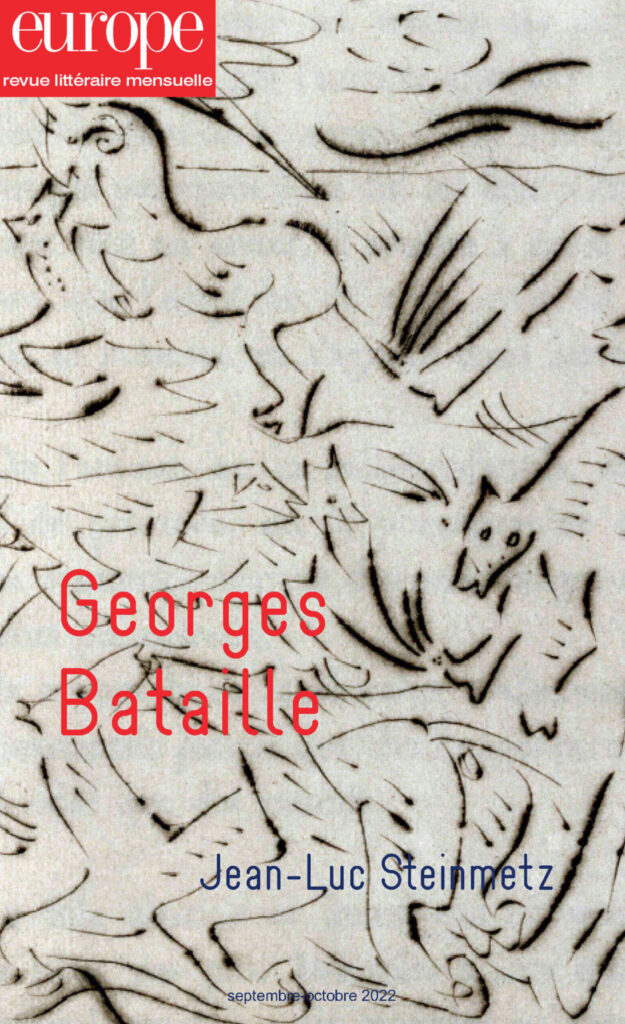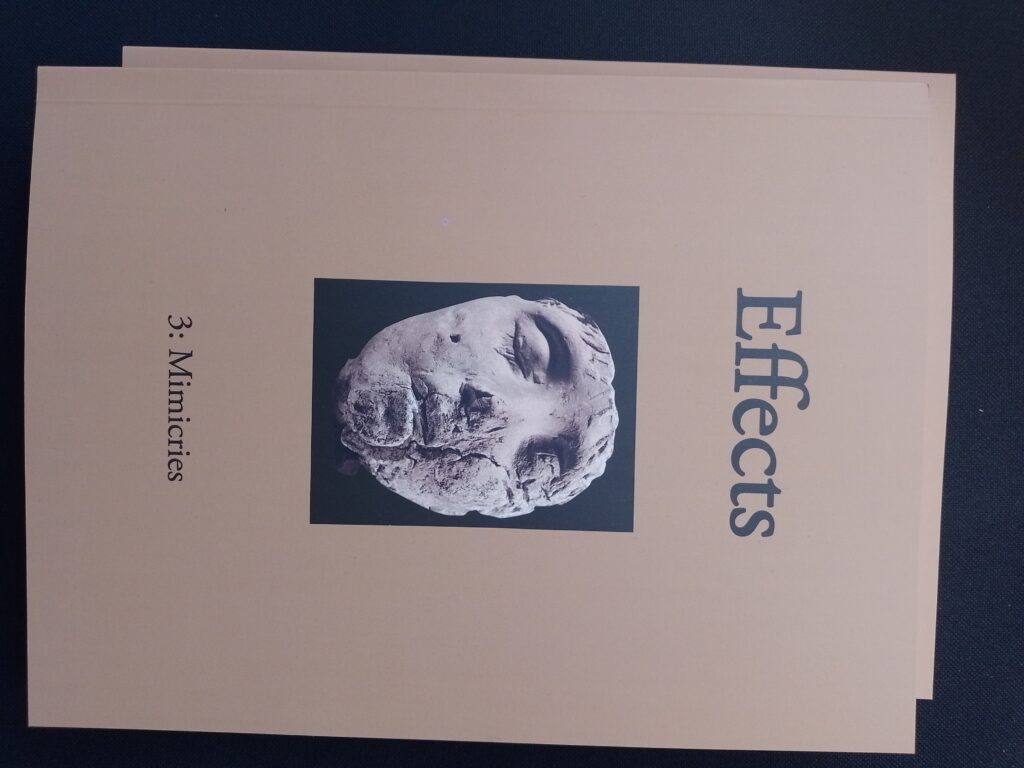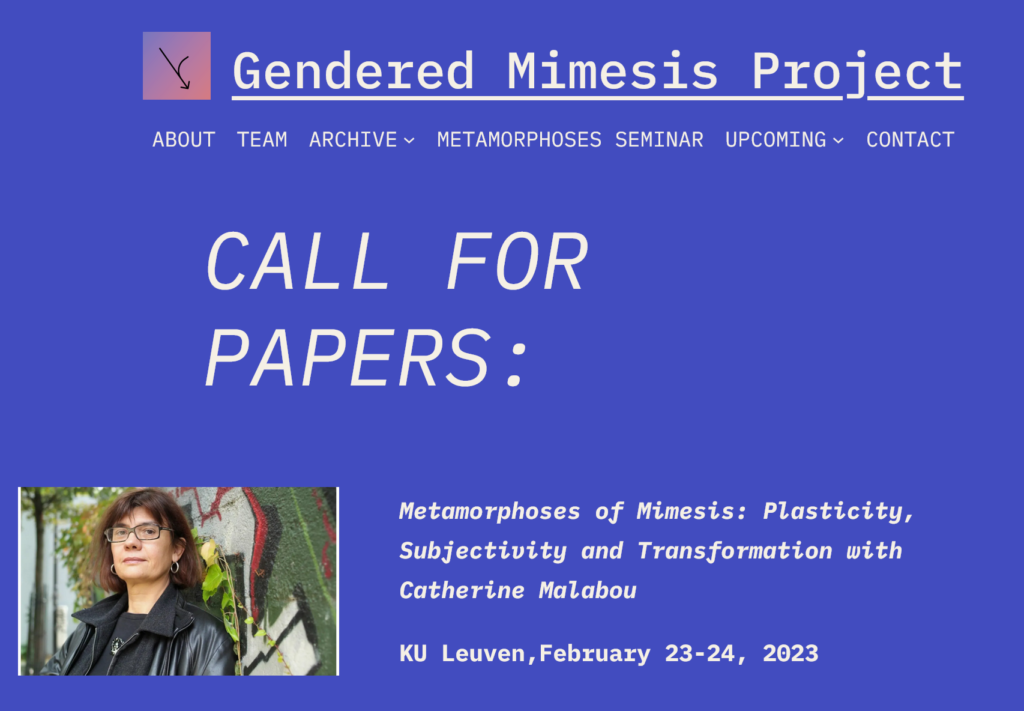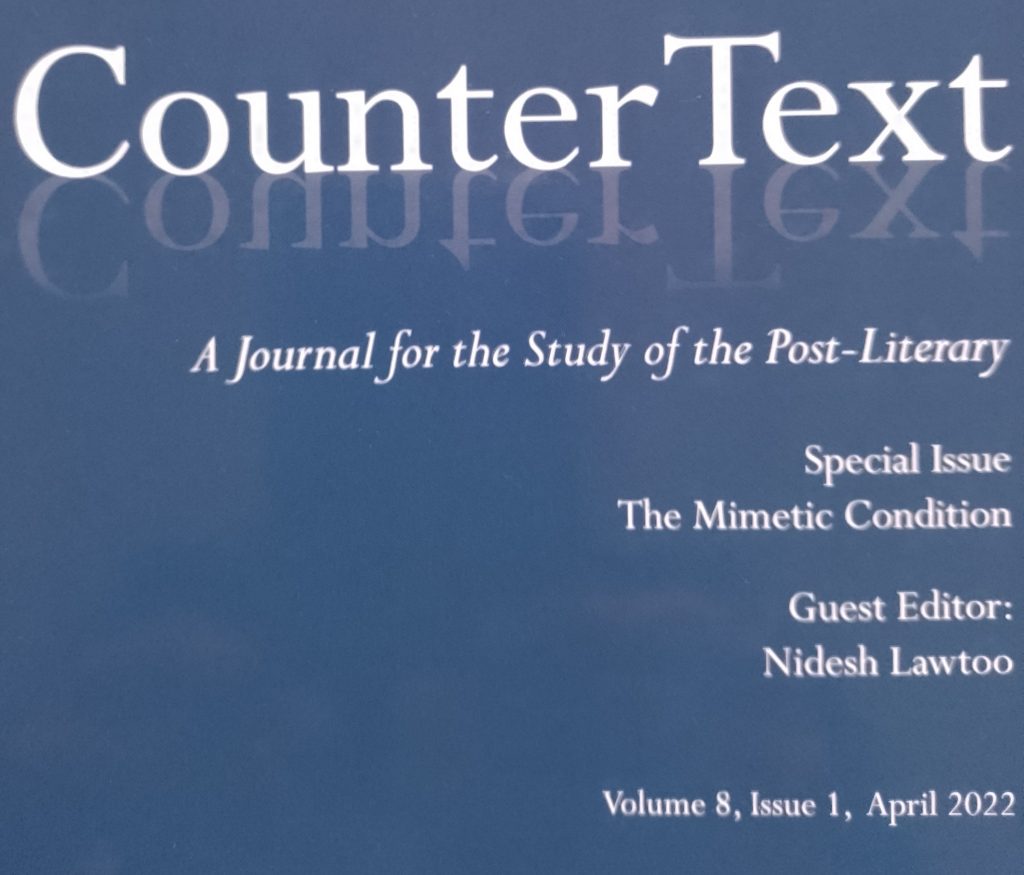In this seventh episode of HOM videos, German philosopher Gunter Gebauer (Free U of Berlin) discusses the role mimesis plays in sports, the origins of language, social distinction, crowd behavior, and the recent rise of hypermimetic behavior in the digital age, all of which paint a picture of homo mimeticus beyond good and evil.
Category Archives: News
Georges Bataille 60 years after

In this special issue of Europe, edited by Stephane Massonet, prominent Bataille scholars including Denis Hollier, Michel Surya, Jean-Christophe Bailly, Mathilde Girard, and others testify to the timeliness of this untimely thinker. Nidesh Lawtoo adds a chapter on Bataille’s mimetic community.
Caillois on Mimicry

Special issue of Effects on Mimicries edited by Jeffrey Stuker and Jan Tumlir with an introductory essay on Roger Caillois and mimicry by Nidesh Lawtoo, available here.
The Mimetic Condition

The articles in this special issue offer powerful transdisciplinary testimony to the rich potential of the contemporary return to mimesis, and in doing so suggest ways in which the mimetic turn and the post-literary turn may be understood as critically supplementing each other. In this short accompanying video Guest Editor Nidesh Lawtoo offers a foretaste of what readers can expect.
Gendered Mimesis New Website & CfP for Malabu Conference

/https://genderedmimesis.com/call-for-papers/
Keynote Dialogue btw Jane Bennett & Nidesh Lawtoo: From Homo MImeticus to Trans-Specied Mimesis
In this dialogue, Jane Bennett and Nidesh Lawtoo experiment with a mimetic genre to reflect on the vibrant interplay of human and nonhuman forms of communication. What style of language best approximates this mimetic entanglement? What role do non-verbal mimicry and gesture play in the birth of homo mimeticus? These are some of the questions on trans-specied mimesis the dialogue seeks to explore by going beyond nature and culture in the heterogeneous company of Nietzsche, mirroring bodies, and middle verbs.
Keynote II: Narrative as Body (Vittorio Gallese)
When navigating the parallel world of fictional narrative, we basically rely on the same brain-body resources shaped by our relation to mundane reality, since both realms are characterized by similar social practices and performative acts. Cognitive narratology reveals that readers make sense of complex narratives by relying on very few textual or discourse cues.
KEYNOTE 1. Plato on Facebook (Mikkel Borch-Jacobsen)
In Keynote 1 for the Mimetic Turn, Mikkel Borch-Jacobsen reloads Plato’s critique of mimesis for the digital age by restaging the following dialogue:
Socrates : Of the many excellences which I perceive in the order of our state, there is none which upon reflection pleases me better than the rule about Internet.
Glaucon : To what do you refer ?
Socrates : To our refusal to admit the memetic kind of media, for it certainly ought not to be received … Speaking in confidence, for you will not denounce me to Facebook and the rest of the memetic networks, all memes are made to contaminate the thinking (dianoia) of the hearers, unless as an antidote (pharmakon) they possess the knowledge of the true nature of the originals.
Introducing the Mimetic Turn (Nidesh Lawtoo)
If, for a long time, mimesis has been restricted to the logic of visual representation, aesthetic realism, and the metaphysics of sameness it presupposes, the ERC-funded project Homo Mimeticus overturns this perspective to foreground a re-turn to an immanent, affective, embodied, and relational conception of mimesis at play in different processes of becoming other. This introduction to The Mimetic Turn Conference (April 2022) presents some of the concepts driving this new theory of homo mimeticus.
SPECIAL ISSUE: The Mimetic Condition

Based on a HOM conference held at KU Leuven, this special issue of CounterText on The Mimetic Condition (ed. Nidesh Lawtoo) joins forces with Jean-Luc Nancy, Gunter Gebauer, Christoph Wulf, and many others in order to promote a mimetic turn, or re-turn of attention to mimesis across different areas of critical theory. In the process, it proposes steps to a new theory of homo mimeticus to face some of the main–pandemic, political, environmental…– crises that cast a shadow on the present and future. Sample chapters available HERE& an Introductory VIDEO HERE.
